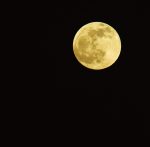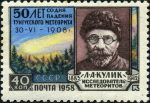Update · 8 April 2024: Did you see it?
![[2024 Solar Eclipse]](https://riverhouses.org/wp-content/uploads/2024/03/rjohara-2024-04-08-607-solar-eclipse-1018x1024.jpg)
There is a total solar eclipse coming up on Monday, 8 April 2024, and the zone of totality will be passing right across North America. This will be a major astronomical (and media) event, and you should definitely make a plan to watch it with your homeschool students if you can. And if you’re anywhere near the center of the eclipse’s path, you should consider making a special trip to view it. (Expect many hotels and motels in good locations to be already booked up, alas.)
![[Solar Eclipse Path]](https://riverhouses.org/wp-content/uploads/2024/03/eclipse-solar-2024-04-08-1024x619.png)
Whenever you’re looking for information about eclipses, the timeanddate.com eclipse pages are always a good place to start:
To get the exact timing for your specific locality, visit that page and enter your zipcode or city/town. The entirety of a solar eclipse, from first partial phase to last partial phase, may last two or more hours. But totality, the magnificent climax that everyone wants to see, sweeps past in only three or four minutes. Be sure to show your students the wonderful maps and animations on that page that illustrate the path of the moon’s shadow over the course of the eclipse and how small the little moving spot of totality is.
NASA also has an excellent page on this eclipse with a detailed path map and video that are perfect for sharing with your students:
If you’re stuck with bad weather when the special day arrives, or if you can’t watch the eclipse directly for any other reason, both timeanddate.com and NASA will be broadcasting the event live from the zone of totality, so you can watch it all from the comfort of your homeschool living room.
In fact, if you’re in the partial-eclipse zone (as I am) it will be worth checking the livestream timing carefully and coming inside to watch full totality when it occurs at one of the broadcasting locations.
The best way to follow a solar eclipse in your own back yard is by using an ordinary pair of binoculars as a projector — don’t look through them, but rather hold them pointing toward the sun and let the sun’s image pass through them onto a sheet of paper a foot or two away. You’ll get a beautiful sharp picture. (Practice your projection and focusing techniques beforehand on the regular non-eclipsed sun.) For an ideal souvenir of the day, project the eclipsed sun’s image onto your hand or your children’s hands and take a picture of it for your homeschool scrapbook.

Timeanddate.com has a handy little primer on what solar eclipses are and how they occur, as well as how to watch them safely, so you’ll be all prepared to teach a great little eclipse lesson in your homeschool. 🌏 🌑 🌞
There is also a special citizen-science opportunity coming up with this eclipse. If you’re handy with a smartphone camera, you and your students can participate in the Sunsketcher Project (sunsketcher.org) that will be using smartphone images of this eclipse to better map the shape of the sun. Go to sunsketcher.org to find out more and to sign up to particuipate.
What other celestial sights and astronomical alignments will you and your students be examining in your homeschool this Leo Term? 🔭
❡ Remembrance of eclipses past: We have watched quite a few eclipses together in the River Houses, both solar and lunar. You can review (and rewatch!) many of them on the timeanddate.com website: 14 October 2023 (annular solar), 7–8 November 2022 (total lunar), 15–16 May 2022 (total lunar), 18–19 November 2021 (partial lunar), 2 July 2019 (total solar), and 20–21 January 2019 (total lunar). ☀️ 🌕
❡ All the star-sown sky: Teaching your students to recognize the constellations is one of the simplest and most enduring gifts you can give them. Our recommended backyard star guide and homeschool world atlas both contain charts of the constellations that will help you learn your way around the heavens. Find a dark-sky spot near you this month and spend some quality homeschool time with your students beneath the starry vault. ✨
❡ The starry archipelagoes: For a great weekly astronomical essay, perfect for older homeschoolers, pay a visit to “The Sky This Week” from the U.S. Naval Observatory. These well-written pages usually focus on one or two special astronomical events or phenomena. If you have high school science students, have them read these pages aloud to you each week, or ask them to study them and narrate a summary back to you. 🌌
❡ Make friendship with the stars: This is one of our regular Homeschool Astronomy posts. Add your name to our free River Houses mailing list and get great homeschool teaching ideas delivered right to your mailbox every week. 📫
❡ Homeschool calendars: We have a whole collection of free, printable, educational homeschool calendars and planners available on our main River Houses calendar page. They will help you create a light and easy structure for your homeschool year. Give them a try today! 🗓
❡ Support our work: If you enjoy our educational materials, please support us by starting your regular Amazon shopping from our very own homeschool teaching supplies page. When you click through from our page, any purchase you make earns us a small commission at no extra cost to you. Thank you for helping us to keep going and growing! 🛒
❡ Join us! The aim of the River Houses project is to create a network of friendly local homeschool support groups — local chapters that we call “Houses.” Our first at-large chapter, Headwaters House, is now forming and is open to homeschoolers everywhere. Find out how to become one of our founding members on the Headwaters House membership page. 🏡



